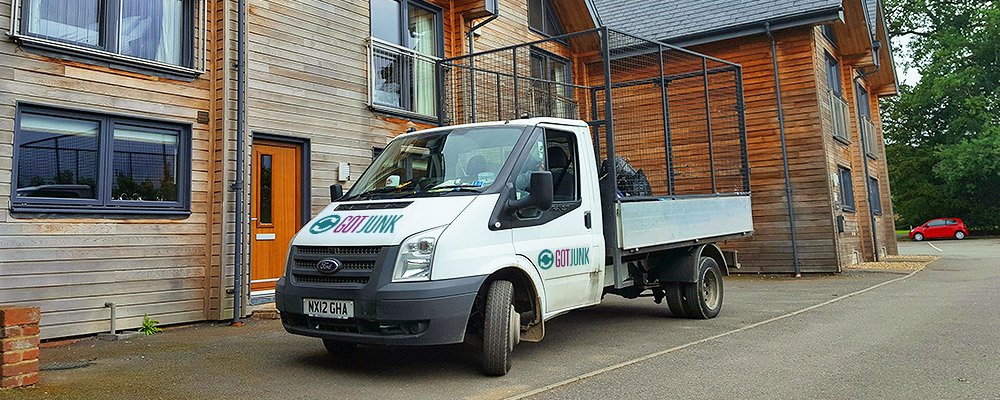How Waste Clearance Services Help Communities
Posted on 01/10/2025
Understanding Waste Clearance Services
Waste clearance services play a crucial role in maintaining the cleanliness and hygiene of communities. These services are responsible for the collection, transportation, and disposal of various types of waste, providing a structured approach to waste management. Proper waste clearance ensures that waste is disposed of responsibly, reducing the impact on the environment and public health.

The Importance of Waste Clearance in Communities
Effective waste clearance services help communities in numerous ways:
1. **Environmental Protection**: Proper waste disposal prevents harmful substances from contaminating soil, water, and air. This helps in preserving local ecosystems and reduces the risk of pollutant exposure.
2. **Public Health and Safety**: Effective waste management mitigates the spread of diseases. Accumulated waste can attract pests and become breeding grounds for pathogens, posing significant health risks.
3. **Aesthetics and Livability**: Regular waste clearance ensures that public spaces remain clean and visually appealing. This enhances the overall livability of a community, making it a more pleasant place to live.
Economic Benefits of Waste Clearance
Waste clearance services also have significant economic implications:
1. **Job Creation**: The waste management industry creates numerous jobs, from collection to recycling and disposal operations. This supports local economies.
2. **Cost Savings**: Efficient waste management can save municipal governments and businesses money by reducing the need for extensive clean-up operations and mitigating the costs associated with environmental damage.
Sustainable Waste Management Practices
Modern waste clearance services often incorporate sustainable practices:
1. **Recycling Programs**: These services help communities to sort and recycle waste materials such as paper, plastic, and metals, reducing the volume of waste that ends up in landfills.
2. **Composting**: Organic waste can be composted to produce valuable fertilizers, which can support local agriculture and gardening initiatives.
3. **Waste-to-Energy**: Some waste management systems convert non-recyclable waste into energy, reducing landfill use and providing a renewable source of energy.
Challenges in Waste Clearance
Despite the benefits, waste clearance services face several challenges:
1. **Funding and Resources**: Effective waste management requires significant investments in infrastructure and technology, which may not always be available.
2. **Public Participation**: Successful waste management relies on active public participation. Educating communities on proper waste segregation and disposal is vital.
3. **Regulatory Compliance**: Adhering to environmental regulations can be complex and costly. Waste clearance services need to stay updated with compliance requirements to avoid legal penalties.
Pros and Cons of Waste Clearance Services
Pros
- **Improved Public Health**: Reduces disease vectors by eliminating waste build-up.
- **Environmental Conservation**: Prevents pollution and conserves natural resources through recycling efforts.
- **Enhanced Community Aesthetics**: Regular waste removal keeps public areas clean and attractive.
- **Economic Benefits**: Creates jobs and can lead to cost savings for municipalities.
Cons
- **Funding Issues**: Requires significant financial investment, which may be challenging for some communities.
- **Operational Challenges**: Effective waste management operations can be complex and require substantial logistical planning.
- **Public Compliance**: Requires consistent and informed public participation in recycling and waste disposal programs.
Tips for Effective Waste Clearance
1. **Educate the Public**: Awareness campaigns can inform citizens about the importance of proper waste disposal.
2. **Implement Recycling Programs**: Encourage the segregation of recyclable materials to reduce landfill usage.
3. **Leverage Technology**: Use technology for efficient waste collection, sorting, and recycling processes.
4. **Collaborate with Stakeholders**: Work with local businesses, schools, and organizations to promote waste reduction practices.

Key Takeaways
- Waste clearance services are essential for maintaining public health, environmental protection, and community aesthetics.
- These services offer economic benefits through job creation and potential cost savings.
- Sustainable practices like recycling and composting enhance the effectiveness of waste management.
- Overcoming challenges such as funding, public education, and regulatory compliance is crucial for success.
Conclusion
Waste clearance services are indispensable in fostering healthy, economically viable, and environmentally sustainable communities. By addressing the challenges and leveraging opportunities, communities can significantly benefit from improved waste management practices. It is a collective responsibility that requires awareness, participation, and collaboration from all stakeholders to achieve the best outcomes.





